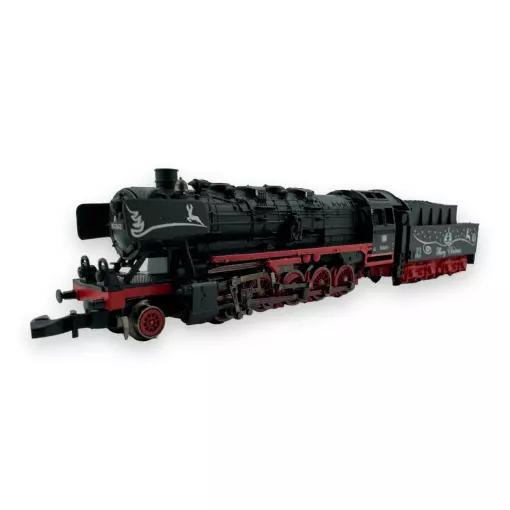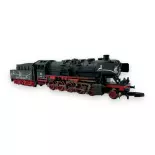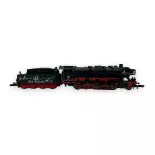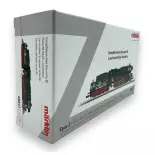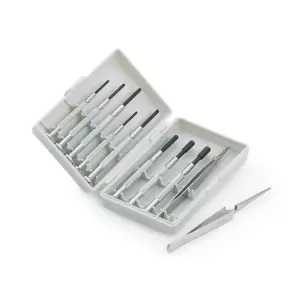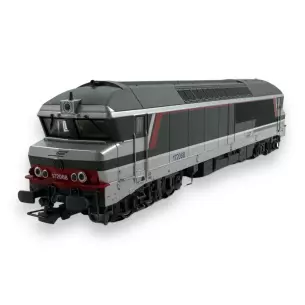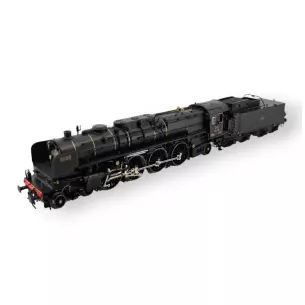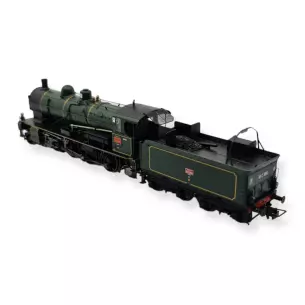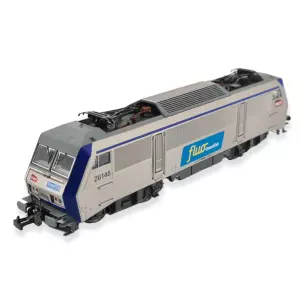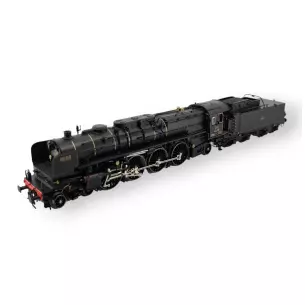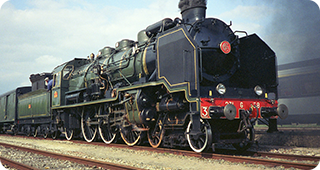Plunge into the golden age of railroading with MÄRKLIN's BR 50 steam locomotive , reference 88847 in Z 1/220 scale.
The features of the MÄRKLIN 88847 scale model:
- Scale: Z 1/220.
- Rail company: DB ( Deutsche Bahn ).
- Era: III B ( Middle period III ).
- Technology: Analog.
- Operating system: 2 Rails / Direct Current / DC.
- Energy: Steam.
- Registration number: 50 2412.
- Delivery: Christmas/Black/Red.
- Material: Plastic / Metal.
- Length excluding pads: 109 mm.
- Tender separated: 2'2'T26.
- Hooks: Pins.
- Buffers: Fixes.
- Lighting: White.
- 3 Headlights white at the front.
- Fanal assured by Warm white LEDs.
- Version with Witte smoke screens.
- Superstructure, chassis and construction in metal.
- Fully new, functional and realistic rigging / distribution.
- All axles are powered.
- Rotor motorwithout iron with drive to all coupled axles.
- Wheel flanges and linkage parts deepened.
- Reproduction of brakes, stone breakers, indusi.
- Discs of agrandised buffers.
- Realistic book and lettering.
- Heavy locomotive for heavy freight.
- Genuine wood box.
- The melody "Jingle Bells" sounds when the box is opened.
A little touch of history:
The Decapod locomotives in the 150 Z series were steam locomotives of German origin, making their appearance in 1938 and registered BR 50 (BR standing for Baureihe, meaning series or range). They served as the basis for the subsequent design of the simplified BR 52 series (future 1-150 Y at SNCF). An intermediate version between the BR 50 and BR 52, known as the BR 50ük (ük standing for Übergangskriegslokomotive, or transitional war locomotive), was developed during the war, preceding the development of the BR 52.
These medium-powered, light-weight locomotives were developed just before the Second World War to replace the Prussian G10s, built between 1910 and 1924, of which around 2,400 were in service in Germany.
Beyond Germany's borders, several occupied or annexed countries, such as Austria, Belgium, Poland and Czechoslovakia, manufactured BR 50 or 50ük locomotives during the Second World War. However, French factories chose not to produce this model, preferring to focus on building the more powerful 44 or 44ük series locomotives (future 150 Xs at SNCF).
The BR 52s, characterised by their rusticity and simplicity of use, led to most BR 50s being transferred to Germany before the defeat of 1945.







